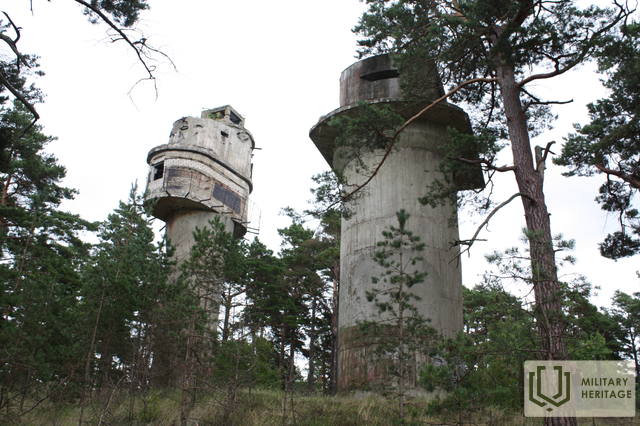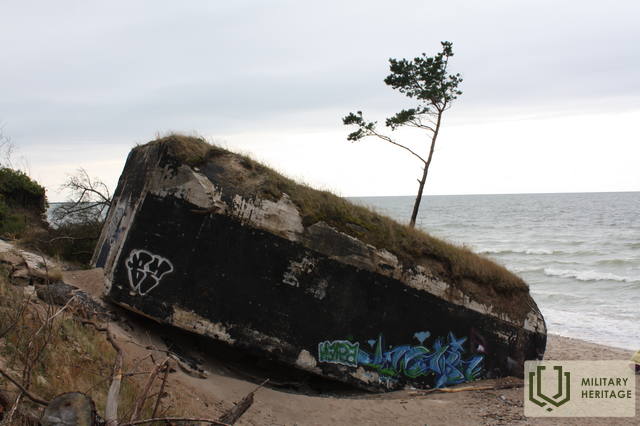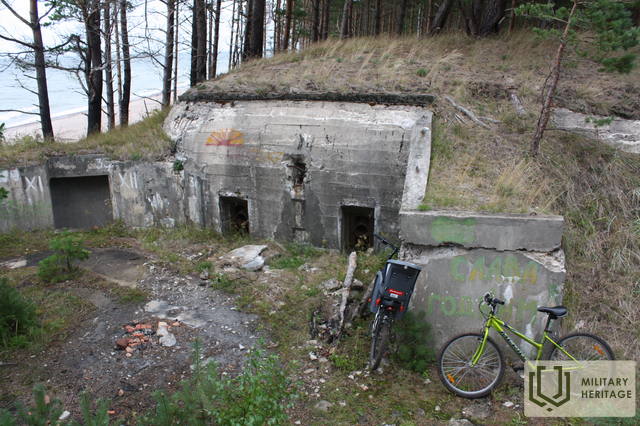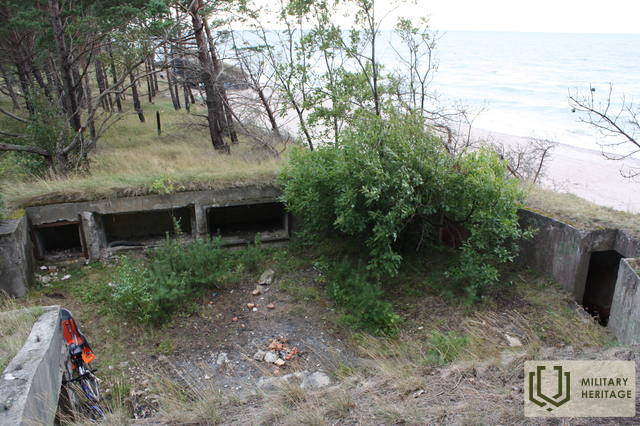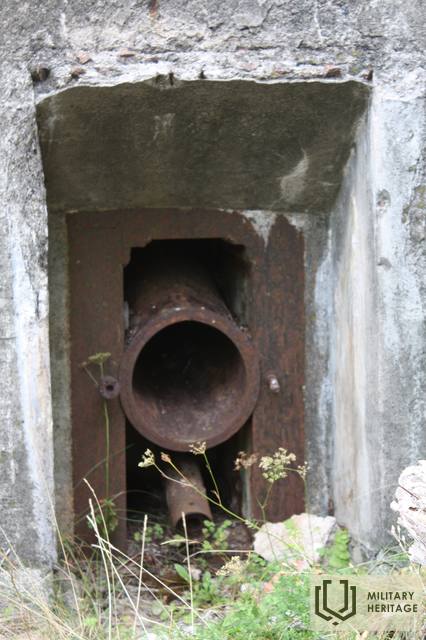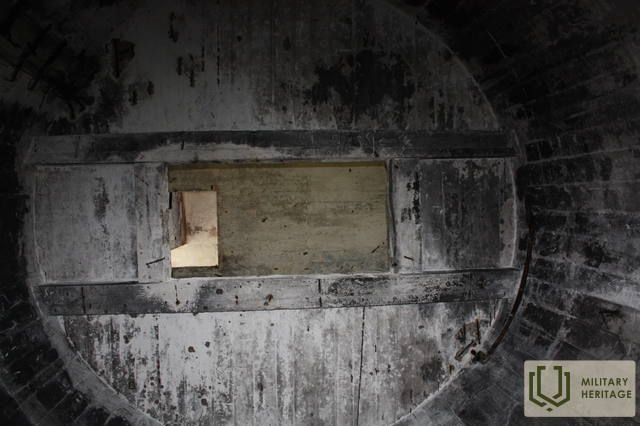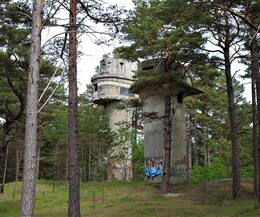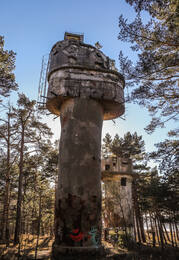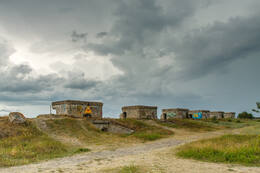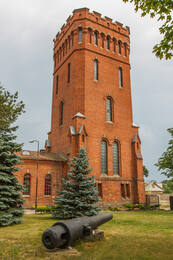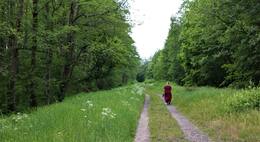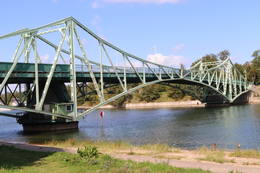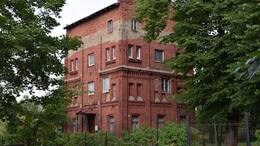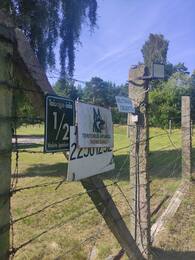The story of a unique military object in Karosta
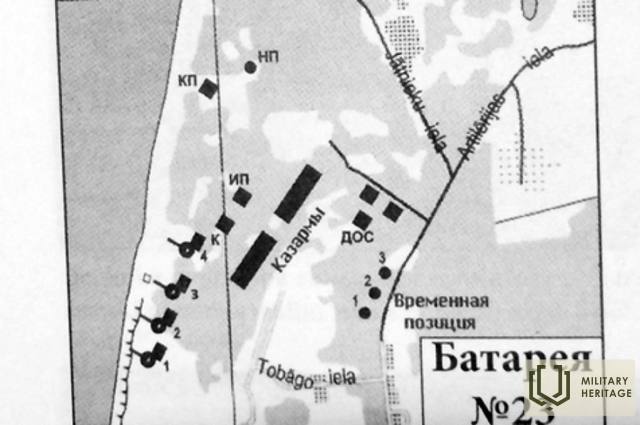
For years, I have not noticed any sustained interest in the unique places just eight to ten kilometres north of the city centre among the residents of Old Liepaja. But hidden in the thicket of the forest, on the dune bank or on the marsh paths, the historic sites of the Karosta are no less interesting historical facts and stories worthy of long-forgotten legends. One of them - the former 23rd Coastal Artillery Battery of the USSR - will be the subject of this story.
Simultaneously with the artillery battery of the 27th coast in the current Pērkone Greenland, the USSR military also started to build powerful artillery positions in the northern part of Liepāja, Karosta, Tobago and Jātnieku streets. Today, this is evidenced by the well-preserved rangefinder towers, underground command post, concrete warehouse vaults, communication center and fire pool contours. However, four concrete positions of 130 mm caliber naval cannons have been the least able to withstand the time tooth and shore collapses.
The importance and urgency of the Russian Soviet "limited" contingent in the Republic of Latvia to station heavy cannons right here can be ascertained by walking along Lībiešu Street in the direction of Šķēde Gardens - the 23rd battery temporary positions are still visible on the partially swampy and overgrown left side of the highway. Their capers - ramparts for three cannons were built on wooden shelves first, during the frosts of the autumn of 1939. Cannon crews who had to sleep in tents began battle duty at the end of November 1939.
Construction of the "real" battery began in January 1940. The first objects were the so-called engineering positions - diesel power plant, heating mains, wooden log barracks, sanitary barracks, laundry and boiler house, but the former tsarist batteries No. 2 on the south side, also concrete and armored steel "hat" covered command post. In May 1940, while planning a road route in the dunes to move heavy cargo, about 300 soldiers set about concreting cannon positions and underground galleries. Needless to say, all the works were vigilantly watched by the NKVD and local farmers of Šķēde and Medze parishes, who worked on bringing stones and gravel, the entrance was denied - the Chekist took the reins of the cart and entered behind the barbed wire fence, there is nothing to rub blisters in foreign eyes! *
However, no secret concealment in the bag prevented the rumors that a dozen concreting works had been an alien element to the working class and negligently violated the process of continuous pouring of concrete. The villain was shot, of course.
A resident of Medze, then a boy, recently told me about the rather strange adventures while building the battery: "We were driving to the Liepāja market in the sleds, and we heard the noise of hell at the" Zvaigznes ". Giant sleds were made of two logs, stacked with steel studs from the Medze quarries, and Russian soldiers also walked next to them or sat on the "sleds", but on the stone carriage like a man with a "gourmet" sitting on the throne **.
23. The batteries were put into operation on May 5, 1941, and on May 17, the crew, 180 people, started combat duty.
In the June 1941 battles, the commander of the battery, Captain Gordeychuk, managed to move the cannons for shooting against the attacking Germans in the Grobiņa-Brēdiki district. On June 27, the cannons were blown up.
Now the remains of a battery, artillery rangefinders, cannon yards, underground galleries and a command post are forgotten and gloomy objects, but I think they have retained their aura of sad history.
* Глаза мазолить - a Russian expression - to hide from strangers.
** Garmoška. Musical instrument - bellows harmonicas.
https://irliepaja.lv/vide/stasts-par-unikalu-militaru-objektu-karosta/
Related timeline
Related topics
Related objects
Liepaja Coast Defence Battery 23
The battery is located between Tobago and Marine Streets, seawards.
According to the "base agreement" between the Republic of Latvia and the USSR, signed on 5 October 1939, a contingent of nearly 25 000 Red Army and Baltic Navy troops was to be stationed in Kurzeme. By March 1941, Baltic naval bases were established in Latvia in the defence sectors of Irbe Bay, Saaremaa and Liepaja, consisting of coastal defence batteries.
The Liepaja coastal defence sector included the 208th artillery division with two 130 mm B-13 gun batteries (No 23 and No 27) and one 180 mm rail gun battery. Construction of Battery 23 began in November 1939 and was completed on 17 May 1941, partly using the reinforced concrete fortifications of Battery No. 2 of Liepaja Fortress. Battery 23 consisted of four reinforced concrete gun positions on the seafront, a command post and an observation (range-finding) tower in the dune forest. The range-finding positions were located in reinforced concrete towers to ensure better visibility while maintaining concealment in the pine forest.
Gun positions 1 and 2 are located on the seafront and partially eroded, while gun position 4 is the most visible in the dunes. Battery 23 was blown up by Soviet soldiers on 27 June 1941 during the retreat from Liepāja.
After the Second World War, Battery 23 was renamed Battery 636, armed with the same 130 mm B-13 guns, but a new range-keeping tower was built in 1954 for fire control, adjacent to the 1941 tower. In 1963, all the Liepaja coastal defence guns were dismantled.
After the restoration of Latvia's independence, the area of Battery No 2 is in the use of the Ministry of Defence.
The two towers are located very close to each other - only 10 m apart. The four gun positions were located to the right of both towers, actually on the seafront. The reinforced concrete bunker of the personnel who manned the guns is now washed away by the waves and has a washed-out foundation, tilted and leaning seawards.
Karosta, the Military port of Liepāja (tour)
The Karosta is the largest historical military territory in the Baltics and occupies almost one third of the entire territory of Liepāja. The Karosta is a unique compound of military and fortification buildings on the shores of the Baltic Sea with a special meaning in the history and architecture of Latvia and the world. The Karosta features such military heritage sites as the North Pier and forts, the Redan, Karosta Prison, Karosta Water Tower, St. Nicholas Orthodox Maritime Cathedral, Oskars Kalpaks Bridge and others.
Liepāja Northern Fort and Battery Nr.1 in Karosta
The Northern Forts are the best known and visually most impressive part of the Liepāja Fortress. Built by the Russian tsarist army in the late 19th century, their historical name is Fortress Battery No 1.
In November 1908, less than 10 years after its construction, the Liepāja Fortress ceased to operate, because its construction was acknowledged as a strategic mistake. Some of the cannons were dismantled and taken to the Kaunas Fortress in Lithuania, while others were remelted. Fortification structures were detonated twice in an attempt to destroy the fortifications. Elements surviving to the present day include artillery batteries not fully destroyed in the explosions and underground structures. Just like the Karosta, the Northern Forts were a closed military territory during the Soviet occupation. Visitors to the Northern Forts should be very careful. As in other places on the Latvian coast, the steep shore of the Baltic Sea in the Karosta is dangerous due to potential coastal landslides. Therefore, it is not allowed to walk under the ruins of the forts.
In the northern part of the fortress was located one of the four coastal defence batteries, Battery No.1. The battery was to house six 6-inch (152 mm) guns of the 1892 model of the Canet system, six 11-inch (280 mm) guns of the 1887 model and two 57 mm Nordenfeld anti-ship guns. Only the guns of the Canet system had a long enough firing range to withstand possible shelling by the German Navy. Thus, at the time of the liquidation of the fortress, the armament was only partially installed.
Karosta Water Tower
The water tower is located in Liepaja, in the Karosta, at 29 General Baloža Street - where the street meets Lazaretes Street. The water tower was an important building in the Karosta, as it supplied almost the entire Karosta area with drinking water. The exact time of construction of the water tower is unknown, but it could have been between 1903 and 1905. The project was probably designed by the St Petersburg architect Stefan Galenzovsky.
The water tower was powered by a steam engine with two coal boilers, one of which was kept in reserve, so there is an equally tall chimney next to the tower. The transmission powered four pumps, two of which were kept in reserve. Four boreholes supplied water to the pumps, which pumped it to a reservoir on the fifth floor of the tower and from there to the officers' apartments and soldiers' barracks in the Karosta.
When the Latvian Army took over the management of the water tower, the Ministry of War also took over the management of the water tower. After the Second World War, the Soviet Army took over the management. The water tower has been closed since 1989.
Although the tower was not a military building, in November 1919 the Latvian Army corrected the artillery fire of the British warships in the fight against the attack of the Bermont troops.
https://industrialheritage.travel/lv/objects/karostas-udenstornis/51
Freedom Trail (Karosta route)
A well-maintained, 9 km long walking trail created to commemorate the bravery and heroism of Latvian men during the Latvian Freedom Struggle in 1919.
The trail starts in Redana and runs through the forest area of Karosta, along the seashore and the Cietokšņa Canal, including a visit to the Tsarist-era fortifications and Soviet-era military heritage. The trail features 5 information boards, which introduce the creation of the Karosta and the fortification system that encircles the entire city, the 1919 Battle of Freedom in Liepāja, the military structures built in later years and life in the Karosta during the Soviet era.
On 18 November 1918, the independent Republic of Latvia was proclaimed, but several foreign troops were still stationed on the territory of the newly established Latvian state.
The Battle of Liepaja in November 1919 played an important role in Latvia's regaining its freedom, when, thanks to the heroism of the soldiers, the enemy was outnumbered almost 5 times. After the decisive battles in Liepaja, Bermont was driven out of Latvia
Oskara Kalpaka Bridge in Karosta
The bridge named after Oskaras Kalpaka is Liepāja's gateway to the Karosta and is located at the meeting point of Oskaras Kalpaka and Atmodas Street - across the Karosta Canal.
The unique swing bridge was opened on 19 August 1906. The bridge was blown up during World War I, but was rebuilt after the war. The bridge was rebuilt again after it was damaged by the steamship Narne in 1926, but it also suffered during World War II when the invading Soviet army shelled the port of Liepaja. Until the restoration of independence of the Republic of Latvia, the Karosta was a closed area of Liepaja, inaccessible even to the inhabitants of Liepaja. The entire Karosta was a military facility, so traffic over the bridge was controlled around the clock by guard posts. Crossing the bridge to the Karosta was only possible with special permits for a few hours a day, the rest of the time the bridge was open to the traffic of Soviet warships. Throughout the years of occupation, the name of the bridge was "Red Army Bridge". In the summer of 2006, the Georgian-flagged tanker "Anna" flew into the northern abutment of the bridge, and after reconstruction, the Oskars Kalpaka Bridge was officially opened in August 2009.
The bridge weighs 300 tonnes and consists of two parts (North and South sides) made of two identical cantilevers. The bridge carriageway is 7.3 metres wide and its deck is made of wooden planks. The total length of the bridge is 133 metres with a span of 27.55 metres + 77.9 metres + 27.55 metres. The height of the bridge above water level is 8.32 metres. The bridge is cut at the appointed times and, in accordance with the Port Safety Regulations, a vessel shall only commence traffic when the bridge is open to vessel traffic and it is safe to enter or leave the Karosta Channel. The Oskars Kalpaka Bridge is turned back to vessel traffic 5 times a day. The bridge is not cut at the specified times if the wind speed exceeds 10 m/s or if no manoeuvres are planned.
Rangefinder No.2 of the 23rd Shore Battery (1954)
The rangefinder (dated 1954) is located in the pines of a dune 10m away from the 1941 rangefinder. The gun positions of the 1st and 2nd guns of the shore battery are located on the seafront and partially eroded, while the gun position of the 4th gun is best seen in the dunes.
Liepaja Fortress Battery 2 was planned to be built further from the shoreline and protected by a high rampart. The armament of the battery was to be 16 11-inch (280 mm) mortars of the 1877 model. The mortars used steep trajectories and did not require direct aiming.
Following the 'base agreement' between the Republic of Latvia and the USSR, signed on 5 October 1939, a contingent of nearly 25 000 Red Army and Baltic Navy troops was to be stationed in Kurzeme. By March 1941, Baltic naval bases were established in Latvia in the defence sectors of Irbe Bay, Saaremaa and Liepāja, consisting of coastal defence batteries.
The Liepaja coastal defence sector included the 208th artillery division with two 130 mm B-13 gun batteries (No 23 and No 27) and one 180 mm rail gun battery. Construction of Battery 23 began in November 1939 and was completed on 17 May 1941, partly using the reinforced concrete fortifications of Battery No. 2 of Liepaja Fortress. Battery 23 consisted of four reinforced concrete gun positions on the seafront, a command post and an observation (range-finding) tower in the dune forest. The range-finding positions were located in reinforced concrete towers to ensure better visibility while maintaining concealment in the pine forest.
After the Second World War, Battery 23 was renamed Battery 636, armed with the same 130 mm B-13 guns, and a new range-keeping tower was built for fire control in 1954, adjacent to the 1941 tower. In 1963, all the Liepaja coastal defence guns were dismantled.
After the restoration of Latvia's independence, the area of Battery No 2 is in the use of the Ministry of Defence.
Pigeon post sea station in Karosta
The former naval pigeon station No.2 - actually a breeding station - is located in Karosta, Pulkveža Brieža iela 6. It was built between 1899 and 1900 and was intended to house about 450 carrier pigeons - winged soldiers. In later years, the building was converted into apartments, so that only the red brick volume of the building remains. The other post pigeon station, No 1, which has not survived, was intended for the use of 750 ground troops and was located at the northern end of Atmodas Boulevard.
The carrier pigeons were a simple, fast and reliable way to ensure communication between the shore and ships at sea. Although the radio telegraph, as a modern communication device, was already widely used at that time, the use of pigeons was considered safer - an enemy could only intercept a message by intercepting the carrier pigeon itself. The carrier pigeons moved at an average speed of 60 km per hour, but in favourable wind conditions they could move at speeds of up to 100 km per hour. Pigeons had to be specially prepared and trained, so handling them required care and patience. The homing pigeon's communication worked through the birds' ability to return to their home cage. When the bird was transferred to another location - a pigeon station, release and release point - and released with a message capsule, the little messenger returned to its home cage. In order to ensure communication between the two pigeon stations, it was necessary to keep a certain number of birds in each, which had grown up in the correspondent's communication, or carrier pigeon, station. Each year the pigeons were involved in various manoeuvres and competitions. Also after Latvia's independence, from 1920 to 1940, an army carrier pigeon station was located in Liepāja for the Latvian Army's Courland Division, which was able to communicate with both Riga and Daugavpils. During the inter-war period, stray communication pigeons from Germany, Poland, Lithuania, Finland and Estonia also wandered into Latvian territory. Pigeons from Latvia were also suddenly found in neighbouring countries.
The building has been rebuilt several times over the years and is now a residential building. But the distinctive shape of the building, made of the red bricks characteristic of the old buildings of the Karosta, is still clearly visible from the outside.
Liepāja coastal artillery battery No. 2
Among the many objects of Liepāja Karosta, Liepāja coastal artillery battery No. 2 is still the most mysterious place in Liepaja. In battery no. 2, the ammunition depots of the troops of the various existing powers were always installed.
Liepaja Fortress Battery No. 2 was built further from the coastline and was protected by a high rampart. The batteries were armed with 16 11-inch (280 mm) mortars of the 1877 model. After the fortress was dismantled, ammunition warehouses were set up here. Due to the danger of explosions, the territory was closed to the public and guarded for 130 years, but now there is an exposition about the activities of the 1st Kurzeme Division Headquarters in the years 1919-1940s, as well as photo evidence of the 1st Liepāja Infantry Regiment, the 2nd Ventspils Infantry Regiment and the Kurzeme Artillery. regiment.
Rangefinder No.1 of the 23rd Shore Battery (1941)
The rangefinders (dating from 1941) are located in the pines of the dune, only 10m from the other tower, built in 1954. The 1st and 2nd gun emplacements of the shore battery are located on the seafront and partially eroded, while the 4th gun emplacement is best seen in the dunes. The reinforced concrete bunker of the personnel who manned the guns is now washed away by the waves and has a washed-out foundation, tilted and leaning seawards.
Liepaja Fortress Battery 2 was planned to be built further from the shoreline and protected by a high rampart. The armament of the battery was to be 16 11-inch (280 mm) mortars of the 1877 model. The mortars used steep trajectories and did not require direct aiming.
Following the 'base agreement' between the Republic of Latvia and the USSR, signed on 5 October 1939, a contingent of nearly 25 000 Red Army and Baltic Navy troops was to be stationed in Kurzeme. By March 1941, Baltic naval bases were established in Latvia in the defence sectors of Irbe Bay, Saaremaa and Liepāja, consisting of coastal defence batteries.
The Liepaja coastal defence sector included the 208th artillery division with two 130 mm B-13 gun batteries (No 23 and No 27) and one 180 mm rail gun battery. Construction of Battery 23 began in November 1939 and was completed on 17 May 1941, partly using the reinforced concrete fortifications of Battery No. 2 of Liepaja Fortress. Battery 23 consisted of four reinforced concrete gun positions on the seafront, a command post and an observation (range-finding) tower in the dune forest. The range-finding positions were located in reinforced concrete towers to ensure better visibility while maintaining concealment in the pine forest.
After the Second World War, Battery 23 was renamed Battery 636, armed with the same 130 mm B-13 guns, and a new range-keeping tower was built for fire control in 1954, adjacent to the 1941 tower. In 1963, all the Liepaja coastal defence guns were dismantled.
After the restoration of Latvia's independence, the area of Battery No 2 is in the use of the Ministry of Defence.
Karaosta manège
The ruins of the Karosta manege are located in Karosta, at 2/12 Zemgales Street, between Zemgales, Burtnieku, Virssardzes and Manēžas Streets.
Until World War I, every Sunday the manege was used for cavalry, artillery and senior officers' sport horse demonstrations and on weekdays it was used for matrons' physical education classes. It was the largest covered hall in Liepāja, so it was also used for official receptions and meals of honour for the garrison matrons. In 1913, from 13 January to 26 April, the 300th anniversary of the reign of the Tsars Romanov dynasty was celebrated all over Russia. On 21 February 1913, the main event of the celebration was organised in the Liepaja garrison with a ball in both officers' meeting buildings (Naval and Infantry). A celebratory lunch was arranged for the officers at the Manege, where 4000 people were seated at tables at the same time.
The Manege was built between 1903 and 1904. Its distinctive feature was the roof - very light, with a riveted metal structure and a tin covering and strips of glass tiles. Together with the huge arched windows, it provided a large amount of light into the room. The hall was ascetic - the floor was covered with sawdust. The Manege suffered during the Second World War, when the entire roof structure was lost. After the war, the Soviet army began to use the arena as a car park and warehouse.
Today, only the walls of the manege can be seen, with the window openings bricked up during the Soviet years.




